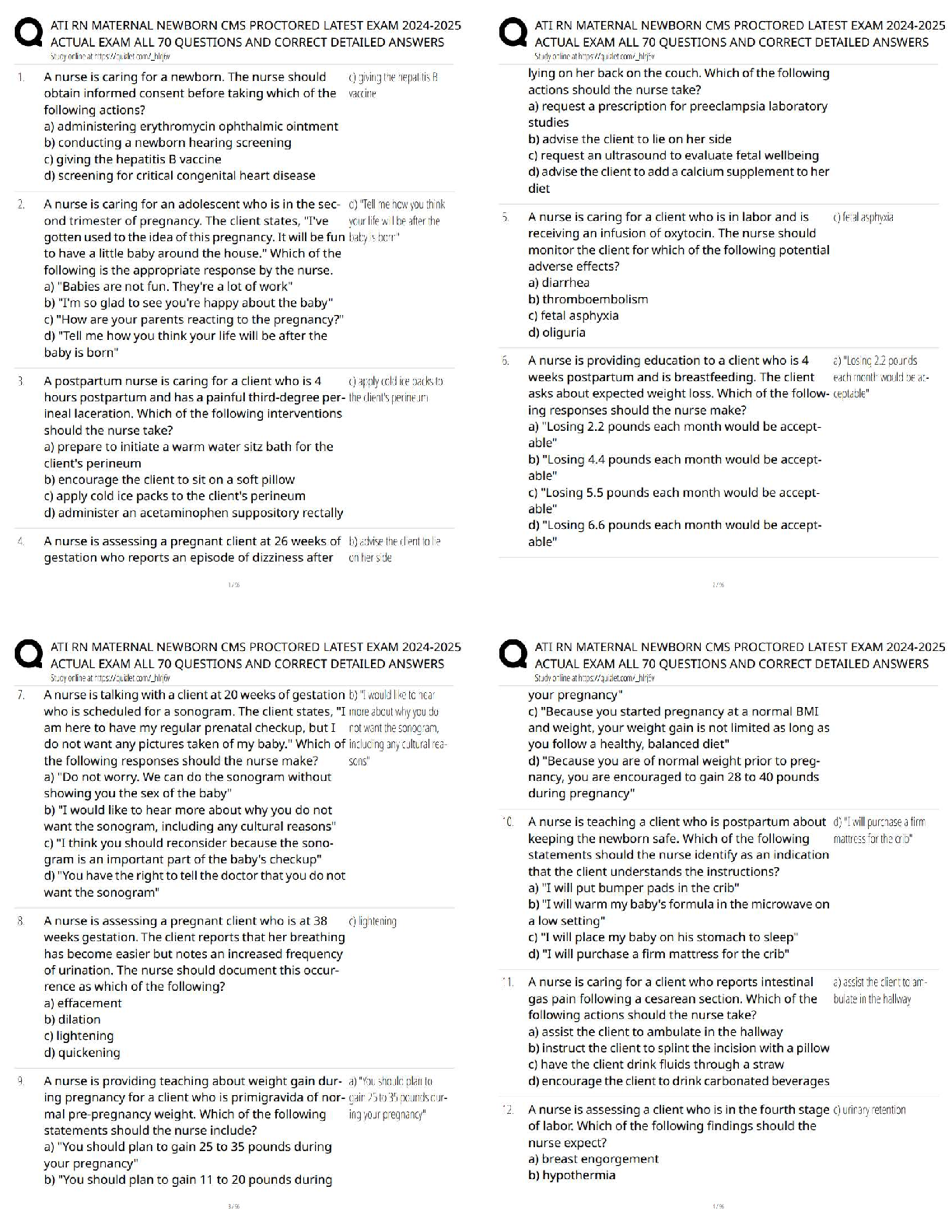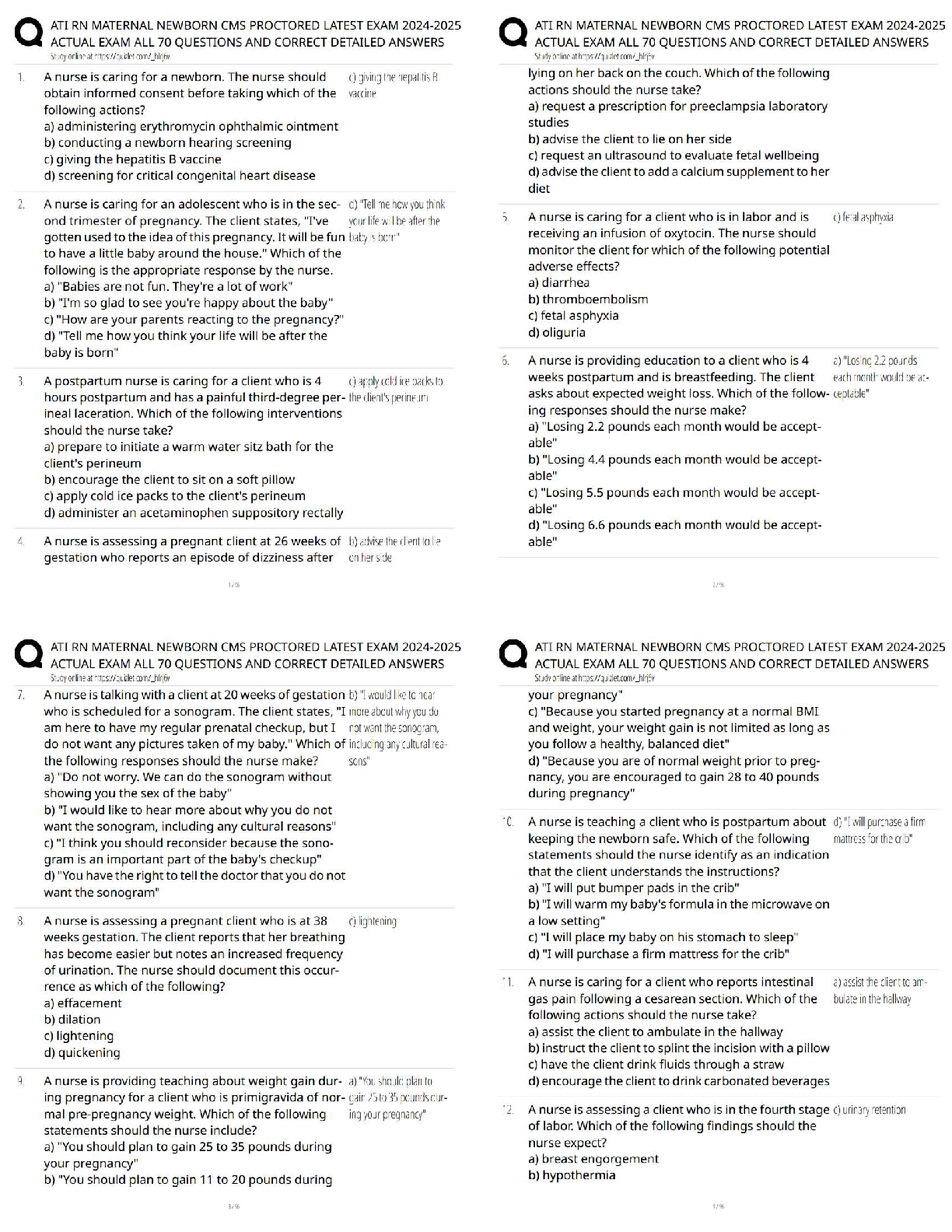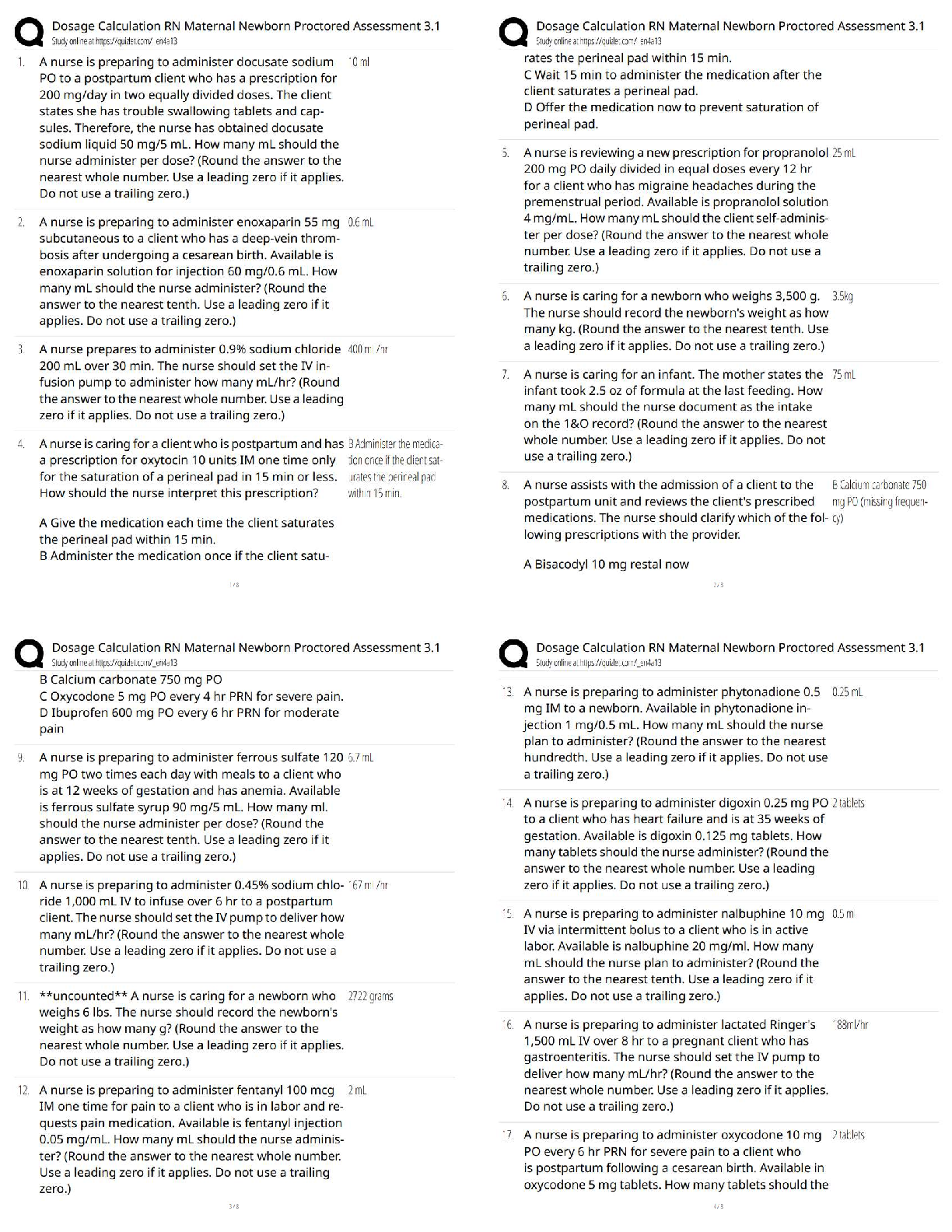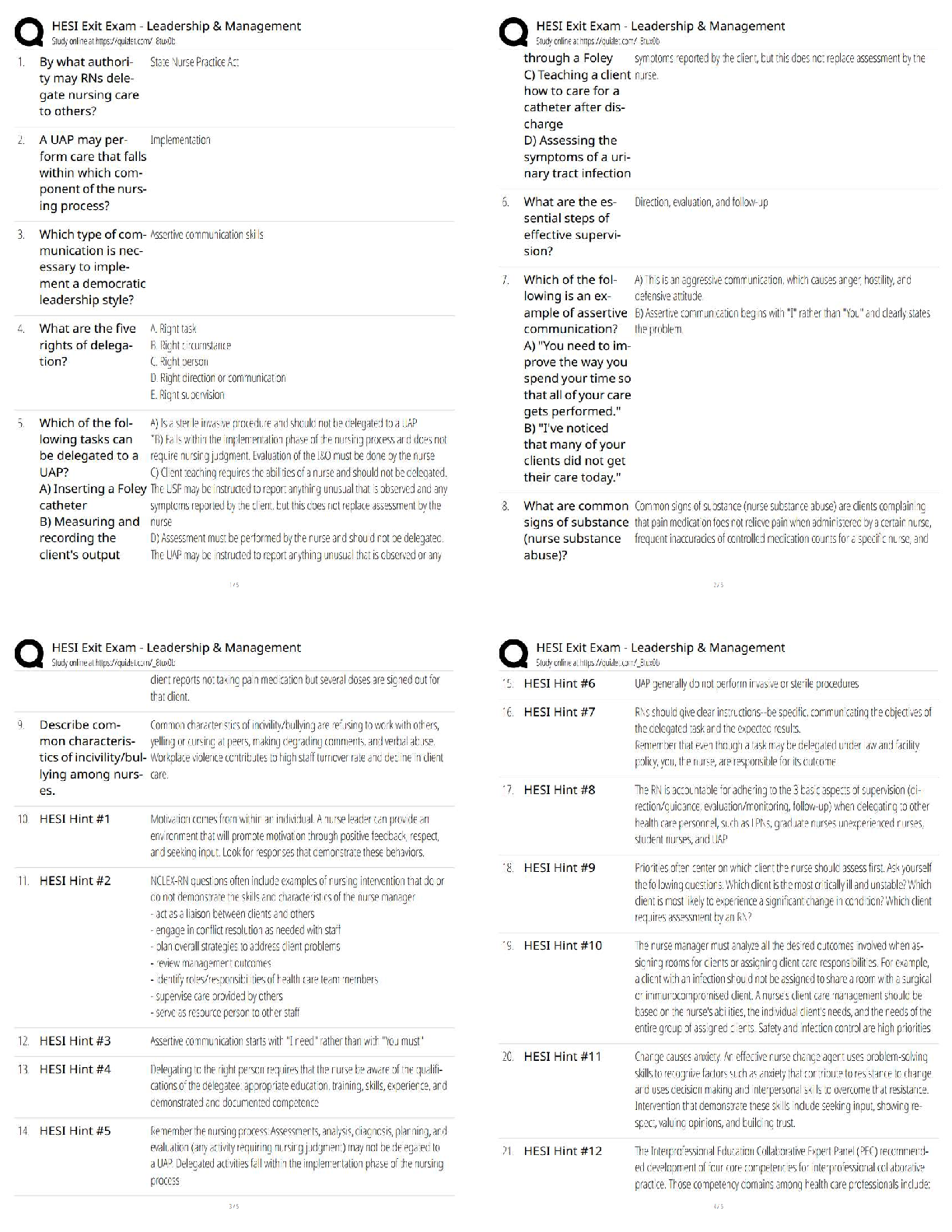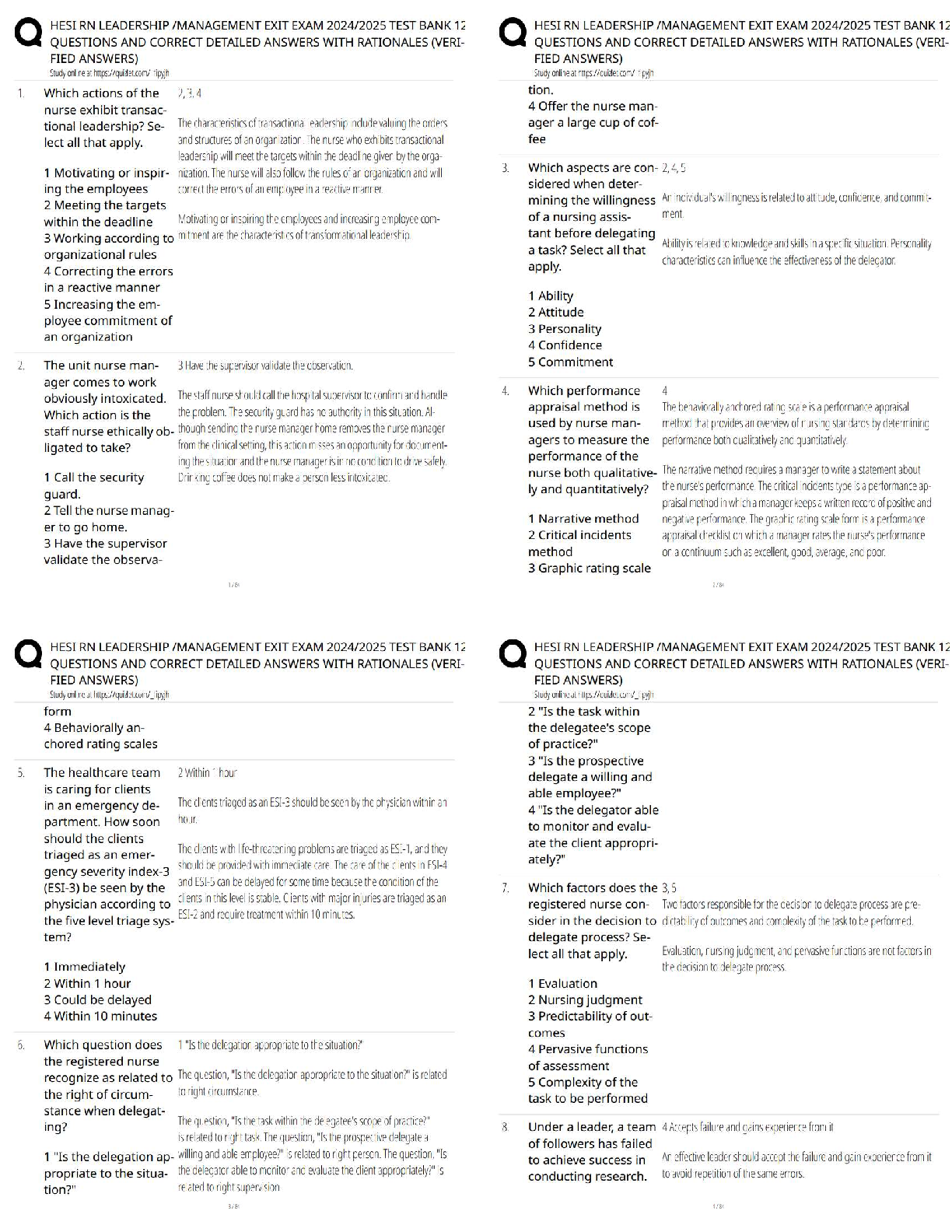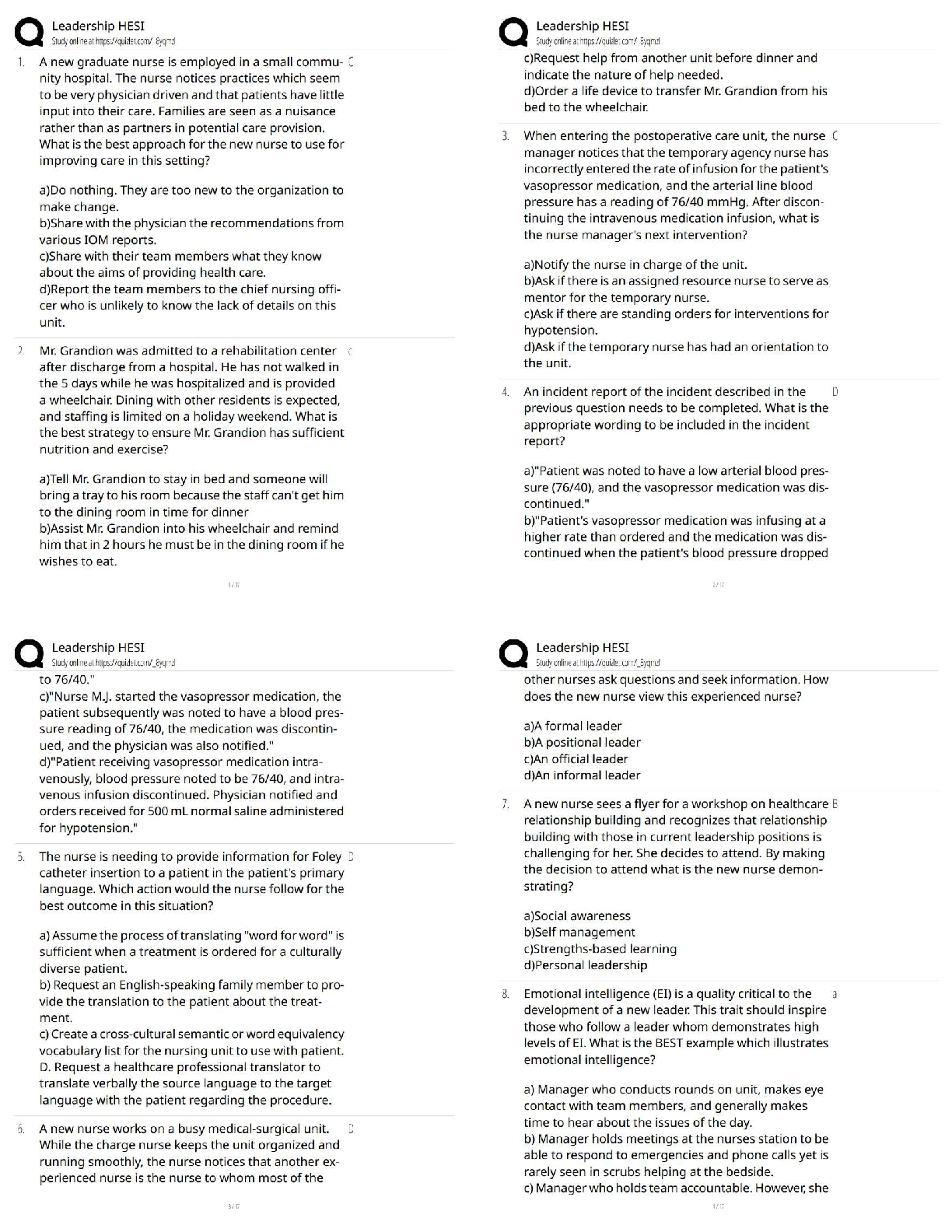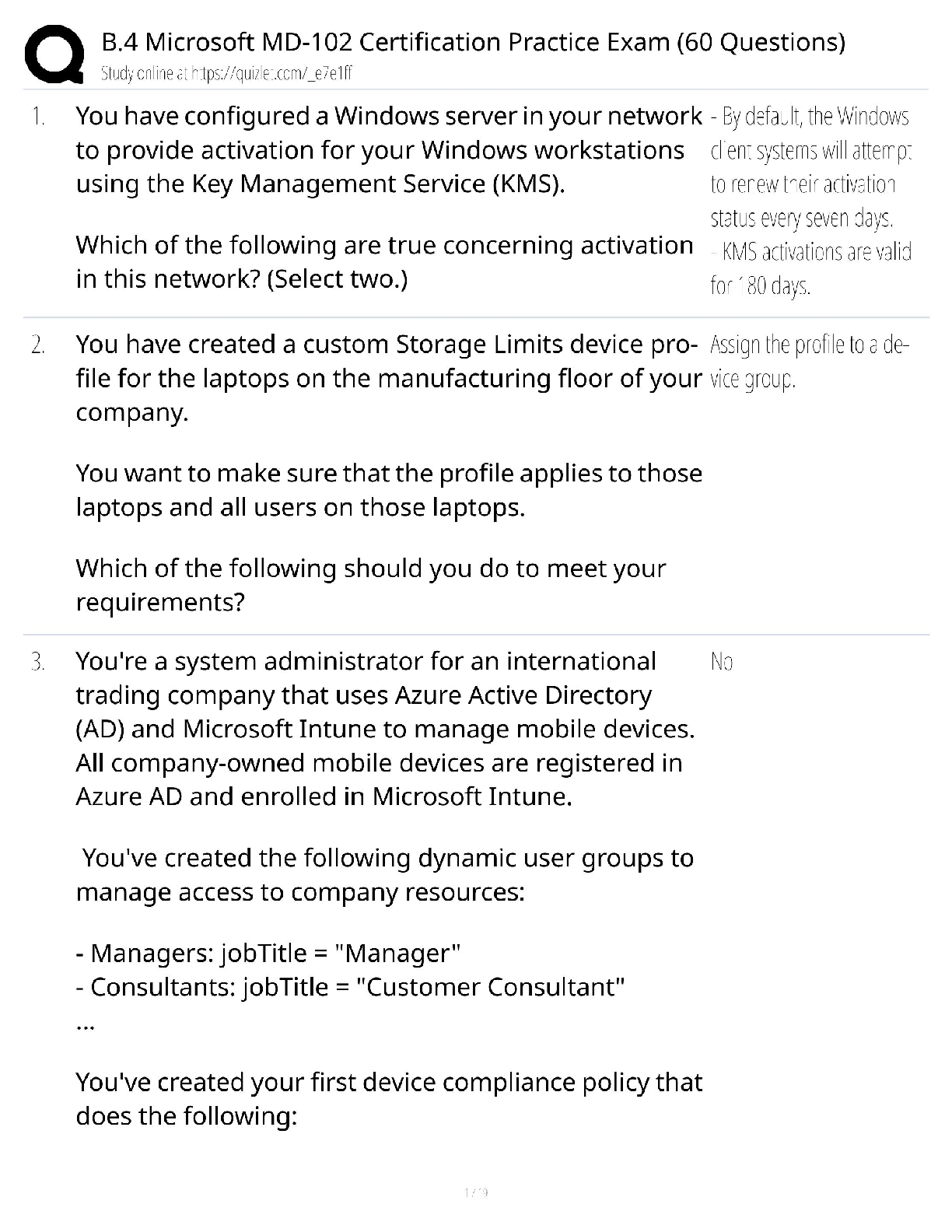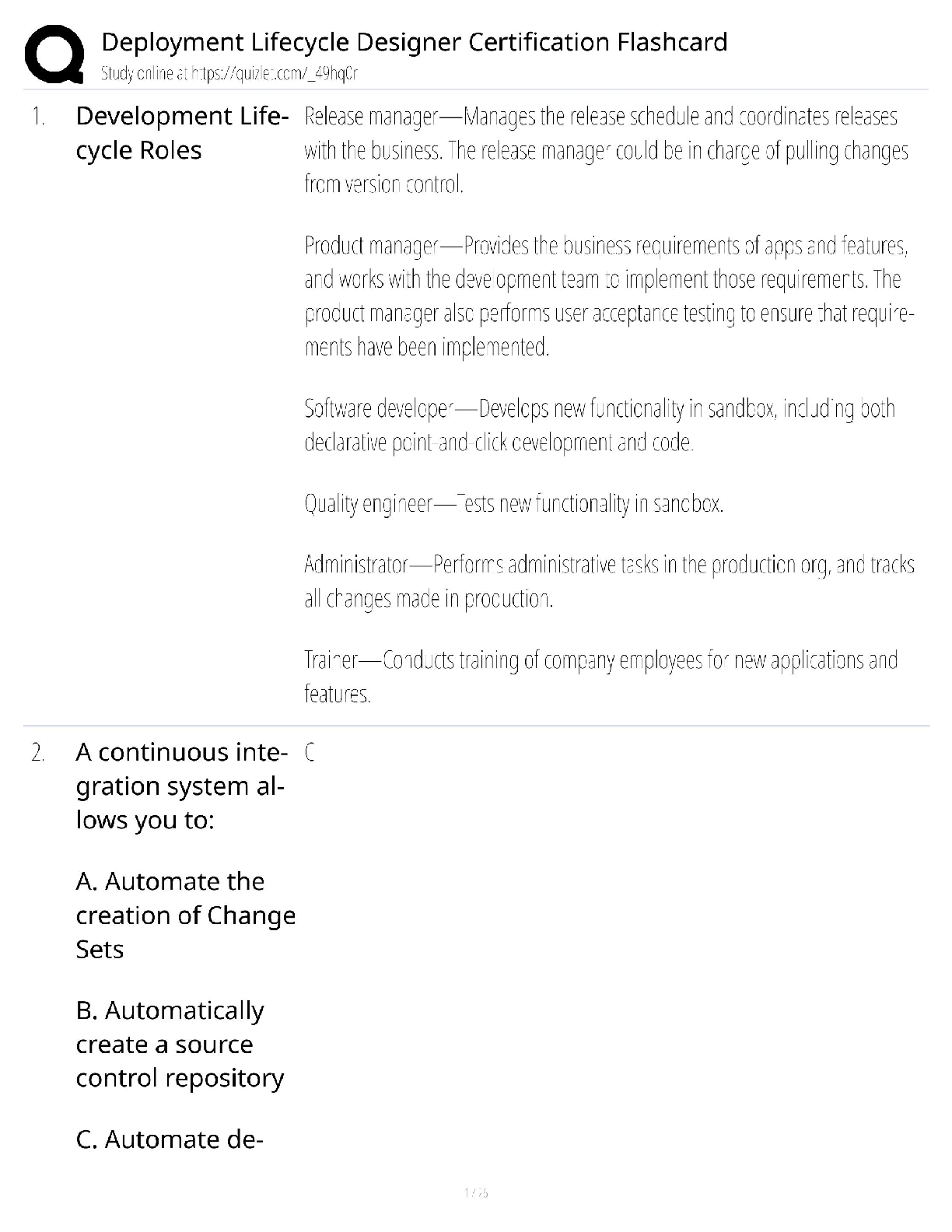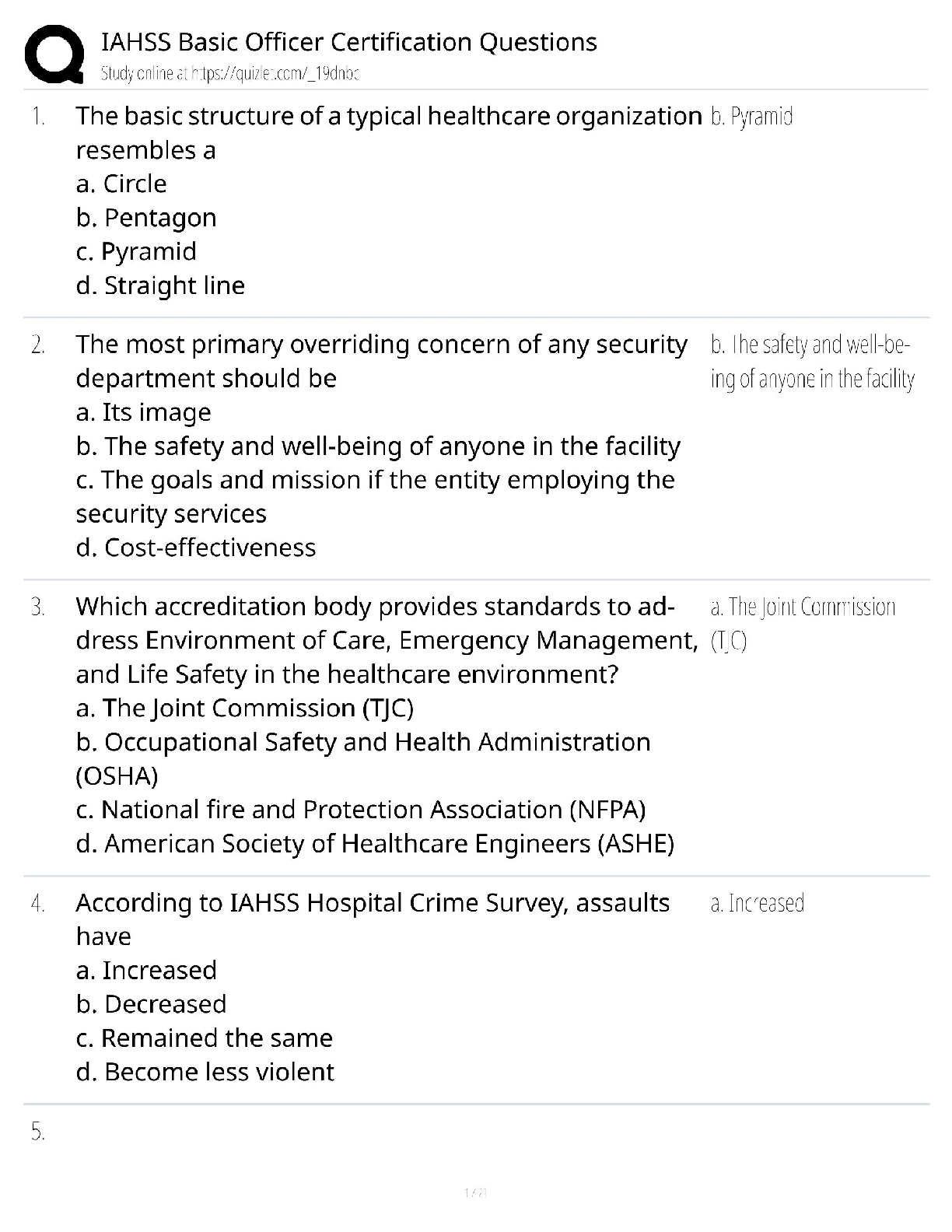UiPath - Introduction to the RPA Developer Role – Giri
Document Content and Description Below
UiPath - Introduction to the RPA
Developer Role – Giri
RPA Digital Transformation ✔✔RPA is probably the fastest path to digital transformation and one
of the most efficient and effective. To
...
better understand why, let's see first what it is and what it
can do. RPA, or Robotic Process Automation, is the technology that enables computer software to
emulate and integrate actions typically performed by humans interacting with digital systems.
What do RPA Bots do? ✔✔RPA robots are able to capture data, run applications, trigger responses,
take decisions based on predefined rules and communicate with other systems. RPA primarily
targets processes which are highly manual, repetitive, rule-based, with low exceptions rate and
standard electronic readable input.
RPA solutions can be thought of as virtual robotic workforces, whose operational management is
made by the business line (only supported by IT), just like for a human workforce.
The Automation First Mindset ✔✔In the Automation First Era, you need to constantly look at your
work and the processes in your company through the lens of automation potential. This is what we
call the Automation First mindset.
We envision a work world where "automation first" is the first thought when an employee needs
help to accomplish a task or improve a work process. The first question will be, "how can I
automate this task to improve my efficiency and effectiveness?", rather than trying to execute all
work manually.
Adopting an "automation first" mindset is the first step on the path to making digital transformation
real in the enterprise. Thinking automation first enables your company to move faster and more
effectively. It helps you serve customers better. It enables you to operate more efficiently. It
unburdens your employees from mundane, repetitive work, allowing them to focus on solving
problems and creating value.
The automation first three-pronged approach: ✔✔1.A Robot for Every Person
Just as Bill Gates envisioned a world with a PC for every desktop, UiPath envisions a world with
a robot for every person. When every worker has a robot to help with mundane tasks, it frees
employees to use time for higher-level work. Workers feel less stressed and become happier and
more productive..
2.Open and Free Collaboration
In business, cooperation and competition are deeply co-dependent. Technologies, too, can work
together, and can also work with people. Ideas can mix, mingle, and make magic. By facilitating
these unions, whether through our community, our partners or through a combination of both,
UiPath creates an environment to nurture automation first and to accelerate human achievement.
3.Robots Learn Skills
We're enabling robots to learn new skills through AI and machine learning. To help humans, robots
not only must do the grunt work, but they need to be able to act intelligently. With AI and machine
learning, robots can extend the scope of work they complete beyond rules-based-action to
judgment tasks.
Meet the UiPath Platform ✔✔The UiPath Platform offers you the components you need to design
and develop automation projects, execute the instructions automatically and manage your robot
workforce. The components of the UiPath Platform are Studio (the workflow designer),
Orchestrator (the robot management platform) and the Robot (the agent executing the instructions).
UiPath Studio ✔✔Helps you design automation workflows visually, quickly and with only basic
programming knowledge. Studio is where the automated processes are built in a visual way, using
the built-in recorder, drag & drop activities and best practice templates.
UiPath Orchestrator ✔✔Lets you control, manage and monitor the robots. It is also the place where
libraries, reusable components, assets and processes used by the robots are stored. Orchestrator is
a server application accessed via browser, through which the robotic workforce is controlled,
managed and monitored:
• The connections with the robots are created and maintained, and the robots are grouped (control)
• The automated processes are distributed as tasks to the robots (management)
• The execution of tasks is logged and kept track of (monitoring)
The Robot ✔✔Executes the workflows and instructions sent locally or via Orchestrator. There are
two types of robots:
• Attended - is triggered by user events, and operates alongside a human, on the same workstation
• Unattended - run unattended in virtual environments and can automate any number of processes
Installing UiPath Studio ✔✔-Community Edition
Always free. Upgrade to Enterprise any time.
2 Studios for designing automation
3 Robots
Cloud-hosted Orchestrator
Forum-only support
UiPath Academy access
-Enterprise Server Edition
On-premises enterprise deployments for large businesses.
Unlimited Studios for designing automation
Unlimited Robots
On-premises Orchestrator
Premium Support
Scale as you grow
Self managed updates
UiPath official training partners
-Enterprise Cloud Edition
Cloud enterprise deployments for businesses of any size. Currently in Preview.
Unlimited Studios for designing automation
Unlimited Robots
Cloud-hosted Orchestrator
Premium Support
Scale as you grow
Always up to date
Centralized user access management
Secure and compliant
UiPath official training partners
What is a Business Process? ✔✔The successful RPA developer combines a good grasp of the
technical skill set with the ability to quickly understand business processes in terms of inputs,
outputs and decision points. The latter will come into play when collaborating with an RPA
Business Analyst on a large implementation project or when undertaking a smaller project on your
own.
Definition: A process is a set of interrelated or interacting activities that transforms inputs into
outputs.
Components of a process: Inputs - the data that goes in the process;Process Flows - the sequences
of sub-processes or activities undertaken in the process;Source Applications - the applications or
systems used to perform the sub-processes or activities of the process; Outputs - the result
generated by the process;
The relation between processes and procedures
[Show More]
Last updated: 3 years ago
Preview 1 out of 11 pages




.png)
.png)


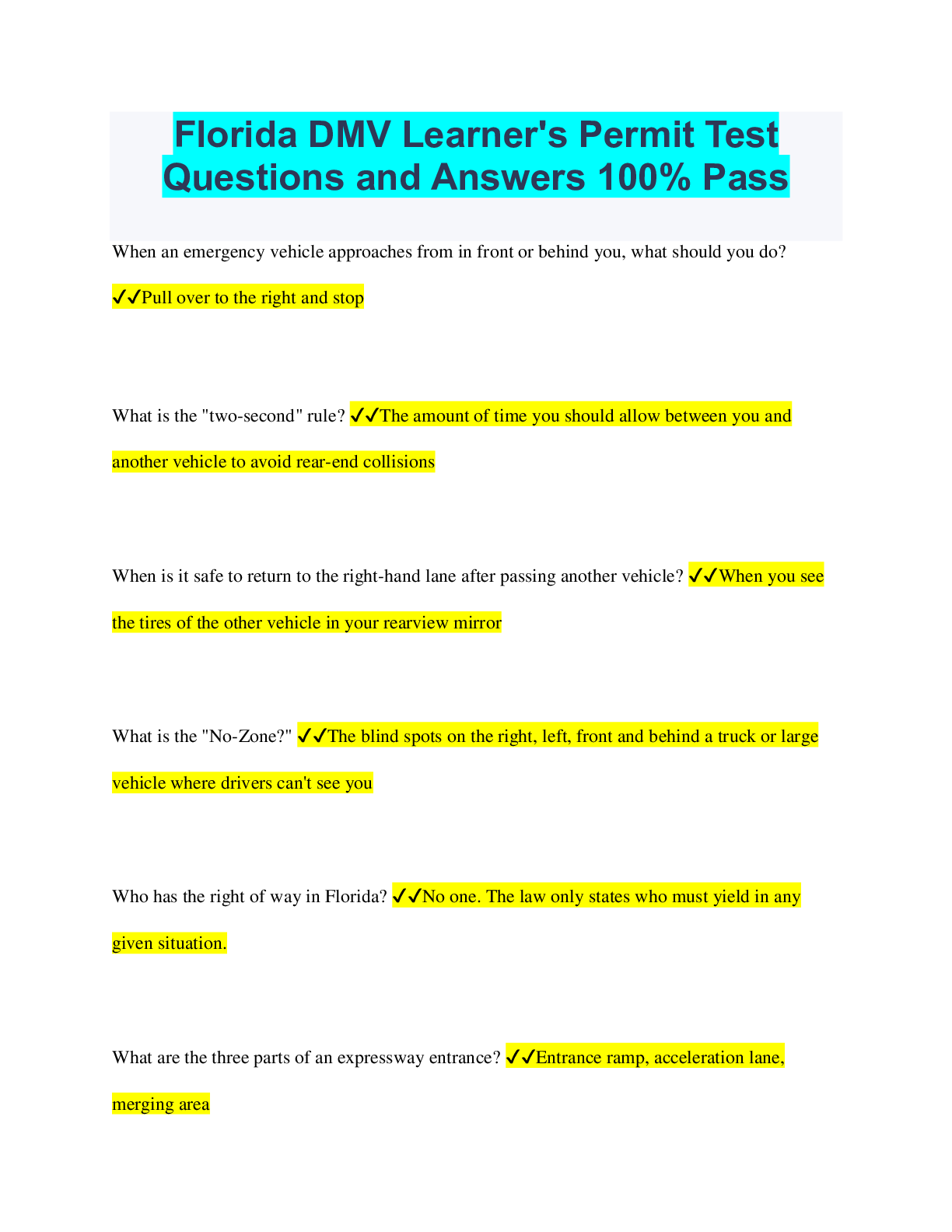
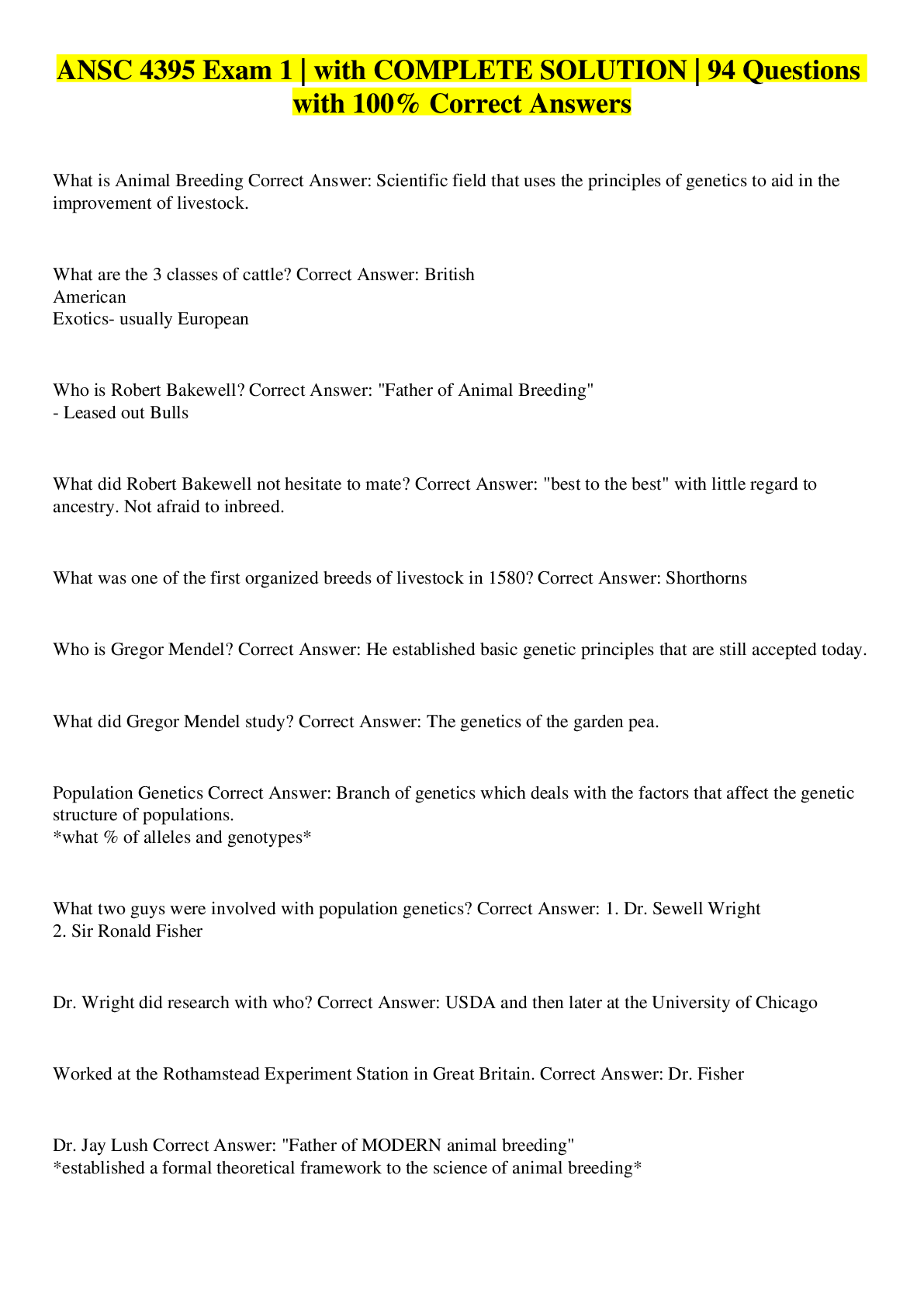

.png)








